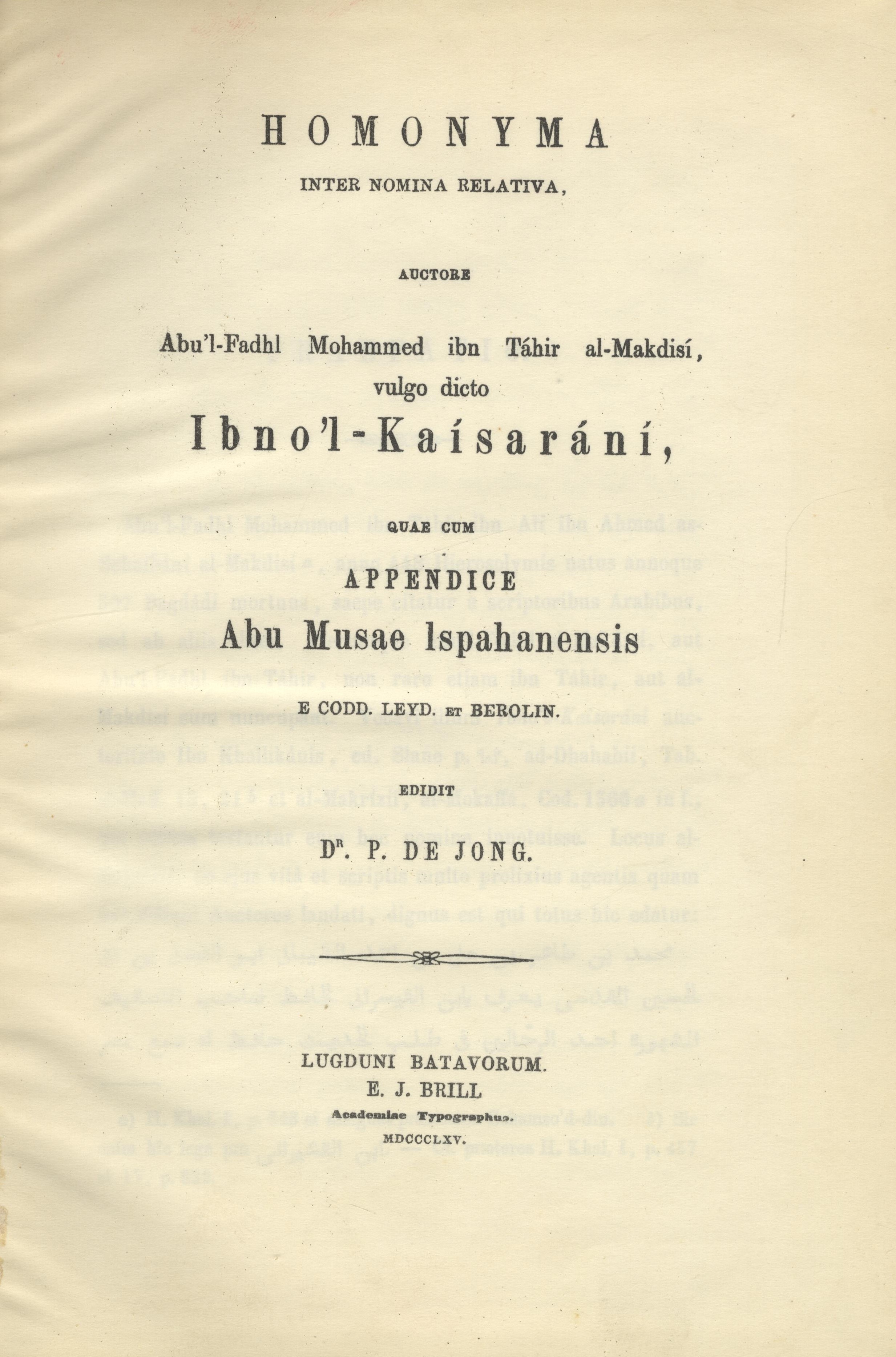Homonyma inter nomina relativa, auctore Abu’l-Fadhl Mohammed ibn Táhir al-Makdisí, vulgo dicto Ibno’l-Kaísarání, quae cum appendice Abu Musae Ispahanensis e codd. Leyd. et Berolin. Al-Ansab al-Mutafiqa. Kitab al-Ansab al-Muttafiqah.
Ibn al-Qaysarani, Muhammad Tahir 1056-1113. Edited by P. de Jong.
Synopsis
Abu al-Fadl Muhammad bin Tahir bin Ali bin Ahmad al-Shaibani al-Maqdisi (c. 1057-1113), commonly known as “Ibn al-Qaisarani”, was born in Jerusalem. He was a Muslim historian and traditionalist. He is largely credited with being the first to delineate and define the six canonical works of Sunni Islam after the Qur’an, and the first person to include Sunan ibn Majah as a canonical work.
His birth date is recorded by Ibn Khallikan as 6 Shawwal in 448 on the Islamic calendar, which William McGuckin de Slane reckoned as December 1056 on the Gregorian calendar.
Ibn al-Qaisarani travelled extensively in search of hadith, or narratives from the Prophet Muhammad. He began learning hadith at the age of twelve and moved to Baghdad at the age of nineteen; after spending some time in Iraq, he returned to his hometown briefly before proceeding to perform the Muslim pilgrimage at Mecca. Eventually, he would travel and study throughout the Tihamah, the Hijaz, Syria, Egypt, Mesopotamia, Persia and Khorasan. He spent much of his life in Hamedan, in present-day Iran, where he wrote a number of respected works in his chosen field of study and gained wide renown for his scholarship and contributions.








